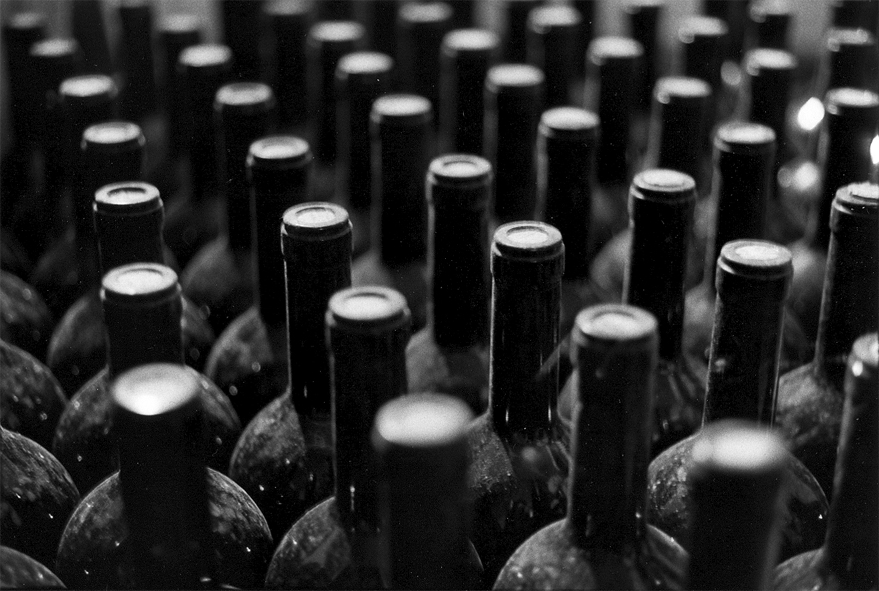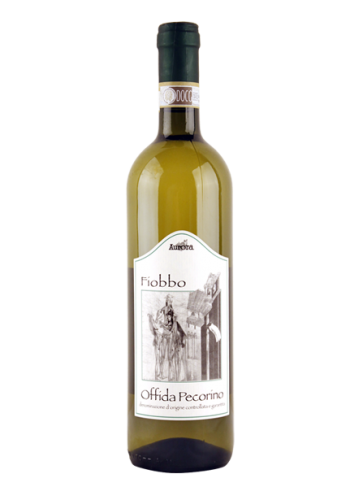

Yield/Hectare: 7,000 kg
Bottles: 14,000
Vines: 10-22 years of age, trained Guyot. The exposition is northwest and the soil is medium clayey with sandy veins.
The grape is 100% Pecorino harvested on September 15, 2014.
Winemaking: a few days before the harvest, approximately 10% of the production was harvested, de-stemmed and crushed to initiate a spontaneous fermentation to serve as an inoculum for the remaining mass, which was harvested when the fermentation was fully active. The harvested mass of grapes were pressed immediately and the must was kept at 10 degrees C. for 18 hours, then racked off the heavy lees. The inoculum was then added and fermentation became tumultuous, then half of the must was transferred to another stainless tank to continue the fermentation for 20 days, temperature controlled (19-21 degrees C.). The other half was transferred to 1,500 liter oak barrels for a 15 day fermentation after which the wine was racked and left to mature in stainless and oak for 10 months. After assemblage the wine was filtered to 0.45 microns and bottled on August 12, 2015.
Taste: pale, clear yellow with brilliant shades of green. In the nose it starts somewhat reserved but gradually releases fresh perfumes of green apples, citrus, herbs and hay.
In the mouth it begins with a smooth freshness which evolves towards a finish which is very savory and refreshing with pleasant note of herbs.
It is a wine with fresh, relaxing notes which could pair well with a delicate vegan plate or a stew with soy delicacies mushrooms and potatoes.
On the label by artist Carlo Marchetti is a representation of the dance of the wolf, an ancient Piceno custom propitiatory of a benevolent nature.
Analysis:
- Total acidity: 6,20 g/L
- Volatile acidity: 0.70 g/L
- Total anhydrous sulfur: 0,077 g/L
- Alcohol: 12,97 %
- Residual sugar: 0.5 g/L
- Dry extracts: 21,9 g/L
From 2011 Offida Pecorino has been designated a DOCG wine
Yield/Hectare: 6,500 kg
Bottles: 10,000
Vines: 9-21 years of age, trained Guyot. The exposition is northwest and the soil is medium clayey with sandy veins. The grape is 100% Pecorino harvested on September 9, 2013. A few days before the harvest, approximately 15% of the production was harvested, de-stemmed and crushed to initiate a spontaneous fermentation to serve as an inoculum for the remaining mass, which was harvested when the fermentation was fully active. The harvested mass of grapes were pressed immediately and the must was kept at 10 degrees C. for 12 hours, then racked off the heavy lees. The inoculum was then added and fermentation became tumultuous, then half of the must was transferred to another stainless tank to continue the fermentation for 20 days, temperature controlled (18-20 degrees C.). The other half was transferred to 1,500 liter oak barrels for a 15 day fermentation after which the wine was racked and left to mature in stainless and oak for 12 months. After assemblage the wine was filtered to 0.45 microns and bottled on August 2, 2014.
Pale yellow with greenish tints. Profound aromas, slow and uncatchable, of great complexity,
in which the initial perfumes of the white grape, apple and citrus gradually hide and are replaced by aromas of toasted hazelnuts and flint.
In the mouth it moves securely from a great elegance to an equilibrium welded from the florid freshness and the usual richness, it opens and presses the palate with continuity and personality with a long persistence, fresh and sapid with perfumes of citrus and wild fennel.
It has aromatic notes and an insightful acidity which make a fine duet with rabbit “in porchetta”, however, the elegance and salinity of this vintage can also exalt a dish of mixed seafood and crustaceans.
On the label by artist Carlo Marchetti is a representation of the dance of the wolf, an ancient Piceno custom propitiatory of a benevolent nature.
Analysis:
- Total acidity: 7.3 g/L
- Volatile acidity: 0.59 g/L
- Total anhydrous sulfur: .058 g/L
- Alcohol: 13.26%
- Residual sugar: 0.6g/L
- Dry extracts: 23.4 g/L
From 2011 Offida Pecorino has been designated a DOCG wine
Pecorino: is an old variety, probably of marche origin, but also found in certain areas of Umbria and Abruzzo. In forgotten times, it was found in the foothills of the provinces of Macerata and Ascoli Piceno, recently rediscovered, it is found in other areas of the Marche where it is cultivated for its early ripening and its ability to give profound structure to white wines. Other names include Vissanello (from Visso-MC), which testify to its adaptability to internal areas. It belongs to the group “italian varieties”, which includes a group of vines characterized by a fairly tight grape cluster of medium-small dimensions, a small wing and a prominent residual pistil in the grape. The characteristics of the must are a high total acid, high sugar levels and characteristic primary aromas.
